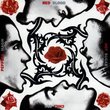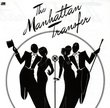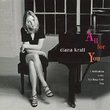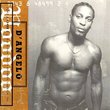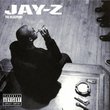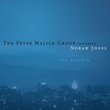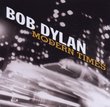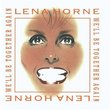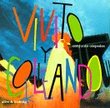| All Artists: Sonny Rollins Title: Night at the Village Vanguard Members Wishing: 6 Total Copies: 0 Label: Blue Note Records Release Date: 9/14/1999 Album Type: Original recording reissued, Original recording remastered, Live Genres: Jazz, Pop Styles: Modern Postbebop, Bebop Number of Discs: 2 SwapaCD Credits: 2 UPCs: 724349979529, 724349979550 |
Search - Sonny Rollins :: Night at the Village Vanguard
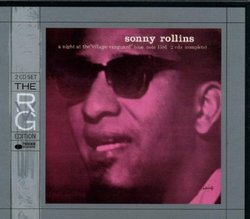 | Sonny Rollins Night at the Village Vanguard Genres: Jazz, Pop
The mid-fifties was an astonishing period for this saxophone genius. And for all his great work in this era, this daring album and "Saxophone Colossus" remain his crowning achievements. With just bass (Wilbur Ware) and dru... more » |
Larger Image |
CD DetailsSynopsis
Album Description The mid-fifties was an astonishing period for this saxophone genius. And for all his great work in this era, this daring album and "Saxophone Colossus" remain his crowning achievements. With just bass (Wilbur Ware) and drums (Elvin Jones) in support, Rollins creates tenor saxophone improvisations of increible beauty and inexhaustible creativity. Twenty years after the initial album, a double album containing the rest of the releasable material from this magic night at the Village Vanguard was issued. With the recent re-discovery of the original tapes, the performance has been assembled as it happened and beautifully remastered by original engineer with superb depth of sound. Several of Sonny's stage announcements have been added to master for the first time. Similarly Requested CDs
|
CD ReviewsVolcanic. Andy Williamson | Chicago, IL | 11/18/2002 (5 out of 5 stars) "Before this live album was recorded saxophonist Sonny Rollins dabbled with a number of different sized groups. Eventually he settled on the trio with either drummer Pete La Rocha or Elvin Jones (pre John Coltrane classic quartet) and bassist's Wilbur Ware and Donald Bailey. A NIGHT AT THE VILLAGE VANGUARD was the first recording ever made at the esteemed jazz club. I don't know what recording techniques were used, but some have expressed their reservations about the sound quality. I would like to dispell those reservations up front. This album does not sound quite as good as some later live recordings from the club. But if you turn it up it sounds practically as good. This is one of those albums that sounds better as you play it louder. Fiddle with your EQ a bit and you will be satisfied.This double disc set is THE one to get-don't even consider earlier partial releases of material from this gig. Here all the music is properly sequenced and you can enjoy the interplay of the trio, the often goofy introductions by Rollins, the chatter between him and the audience, and you can hear him counting off the beginning of tunes which is kind of fun. You get a nice set of standards here including "A Night In Tunisia", "I've Got You Under My Skin", and "What Is This Thing Called Love?" as well as some great originals like "Sonnymoon For Two" and "Striver's Row". The jazz trio is a bit easier to listen to when you talk about a piano-based trios like Sonny Clark or Bill Evans. Without the piano to provide a solid chordal foundation for the melody, it is easy to get lost. The bassist can only provide so much of a tonic root. Think of it as a vine that grows up and wraps itself around a wooden post or trellis; the vine adventures off to one side and then another, but always comes back to its foundation, its root: the post. In jazz, the piano and bass usually make up that post, the center around which the soloist works. Without the piano, the soloist is even more free to explore. This can be dangerous as the tonal boundaries of the music become less defined and blurry-in essence, the soloist may lose his or her way much more easily. And without the piano, to where does the soloist return? This certainly *could* have been the case with this recording. The fact that Rollins never loses his way is a testament to his brilliance and complete command of his instrument. It may take you a few listens to acclimate your ear to this piano-less trio, but when everything clicks for you, you'll be loving life. On one of his first albums as leader, Sonny Rollins was already showing us the future of jazz. Essential." Anticipation Of Things To Come MikeG | England | 06/19/2004 (5 out of 5 stars) "At some point in 1956 Sonny Rollins developed from being a promising new voice on the tenor saxophone to one of the great jazz improvisers. From then until his temporary withdrawal from the jazz scene at the end of the decade he produced a series of fine recorded sessions, including a classic album aptly titled `Saxophone Colossus'. This Village Vanguard recording from 1957 is valuable for capturing Rollins in good form in a live setting accompanied only by bass and drums. Of additional interest is that the drummer was another jazz colossus treading his own path to greatness: Elvin Jones.As these were live sessions, it's not surprising if some of Sonny's playing here is sometimes more diffuse than in the more tightly constructed pieces on his studio albums from this period. Nevertheless there is a lot of inspired and energetic playing here. Tracks such as "Sonnymoon for Two", "Softly as in a Morning Sunrise" and "A Night in Tunisia" are often singled out as highlights; but I haven't yet come across any appreciation of "What Is This Thing Called Love?" as the most remarkable performance. This track reminds me of two other Rollins classics: "There's No Business Like Show Business" (on the earlier album, `Worktime') and "Three Little Words" (`Sonny Rollins on Impulse' - 1965). Like them it shows Sonny paring down and reconstructing a well-known standard with characteristic resourcefulness and wit, playing with motifs from the tune and with time and phrasing, and managing to sound both supremely relaxed and intensely concentrated at a moderately fast tempo. Notice how at the beginning he exploits the lack of a piano accompaniment to create harmonic ambiguity: by playing with just a few notes from the tune he teasingly hides its identity for a few bars (it sounds at first as though he is going to launch into "Toot, Toot, Tootsie"). Here and there on these sessions, but particularly on "What Is This Thing Called Love?" you can also hear Elvin Jones beginning to cut loose from his influences and to anticipate the kind of percussion playing he was to develop in the next few years, reaching a peak in his work with John Coltrane in the 1960s. For example, on this track he already shows that ability both to maintain the basic pulse and to appear to subvert it with the use of complex polyrhythms. This begins to happen during Sonny's solo and becomes increasingly adventurous in Elvin's. There is a particularly telling moment at the end of Elvin's long solo, when, after the original tempo seems to have been lost in a succession of polyrhythms, Rollins comes back in, immediately picking up the original tempo as if both players had rehearsed it down to the fraction of a beat. If it weren't for that moment when Sonny re-establishes control, one could suppose that on this track Elvin is the leader, taking the music where he wants it to go (it is he who has the first as well as the last word!). So for different reasons I think this track is the `classic' of the album and one which gives an intriguing anticipation of things to come - not only of Elvin's later work with Coltrane and others but also of the increasingly abstract style which Sonny was to develop in the next decade.To describe these performances as `dialogues' between Sonny and Elvin would be to unfairly slight the contribution of bassist Wilbur Ware who plays well throughout, reliably maintaining the trio's harmonic foundation, and produces some good melodic motifs in his solos on "Softly as in a Morning Sunrise". But it's fair to say that his more conventional playing helps to set in relief the occasional glimpses into the future we get from his partners. Whether as an historical document or in its own terms as an exhilarating blowing session, this is a highly recommended album. The sound is mono only, but for a club date is good - clear, realistic and well balanced between the three instruments.The only other collaboration between Sonny and Elvin that I know of is the mid-1960s album, `East Broadway Rundown'. You might not like the long `free jazz' title track, but the remaining two excellent trio tracks are available on a CD in the Priceless Jazz series, along with some other good Rollins performances from the period (Priceless Jazz GRP98762- see my Amazon review)." To my mind Rollins's best Joost Daalder | South Australia | 03/16/2002 (5 out of 5 stars) "I have alwys found this the most satisfying, and certainly the most stimulating, of Rollins's recordings. He chose on this occasion to work with just a trio of himself, bass and drums. A lesser jazzman could not have pulled this off, but in Rollins's case one feels never bored, as he keeps coming up with new, exciting, highly musical and well-expressed ideas, showing astonishing versatility and inventiveness. Listen to his work on familiar tunes like "A Night in Tunisia", "Old Devil Moon", "Softly as in a Norning Sunrise", for example, to hear how he rephrases and mines these classics: always aware of the essential melody, but always probing its implications. His rhythmical sense is second to none, as his venturesomeness in this area. The other musicians are also excellent in the way they respond to, and stimulate, the leader. I have never tired of Rollins's music on this recording (and not often on any of his recordings, for that matter), and here he shows himself clearly one of the most important tenor players ever, and certainly one of the leaders on this instrument at the time the recording was made. Indeed, the music he was producing at this time was possibly more gratifying to listen to than Coltrane's, even though Coltrane at his best could be yet more innovative, annd emotionally moving. This is an excellent recording, which I unhesitatingly recommend as a great addition to anyone's jazz library, and possibly as good a way as any to have Rollins represented as the essential musician he is, in any compilation of important jazzmen. - Joost Daalder"
|

 Track Listings (8) - Disc #1
Track Listings (8) - Disc #1